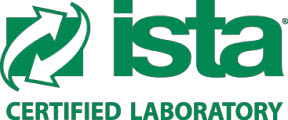Real Time Aging
Real-Time Aging programs provide the best data to determine shelf life and the effects of aging on materials. The test is conducted by placing the test item on a shelf and allowing it to be exposed to typical storage conditions. Doing this will establish the items accurate expiration date. However this test isnt feasible in todays market conditions in which products become obsolete in a short time, and there is a need to shorten the product turnaround time. Time spent sitting on the shelf could prevent lifesaving devices from helping patients in need or it could render the device obsolete before it reaches the market.
To work around this, Real-Time Aging is performed in conjunction with Accelerated Aging tests. Accelerated Aging is a testing method used to estimate the useful lifespan of a product when actual lifespan data is unavailable. This occurs with products that are relatively new and havent yet gone through their useful lifespan. A product can be released to market based upon results of successful Accelerated Aging of the product/package.
How does real time aging work?
Real time aging stores packages under normal, expected conditions of temperature and humidity for the entire duration of their intended shelf life and observes how the package performs over time under realistic conditions.
Real-time aging follows this process:
Packaging
Medical devices are packaged as they would be for real-world use, including labeling and sealing processes.
Storage
The packaged devices are then stored under controlled conditions that replicate environmental conditions over the product’s shelf life.
Monitoring
The packaging is periodically inspected to assess physical integrity such as seal strength, barrier properties, and appearance. Intervals between inspections can be months or years, depending on expected shelf life.
Testing
Performance tests are conducted at regular intervals to determine if packaging continues to adequately protect the device.

